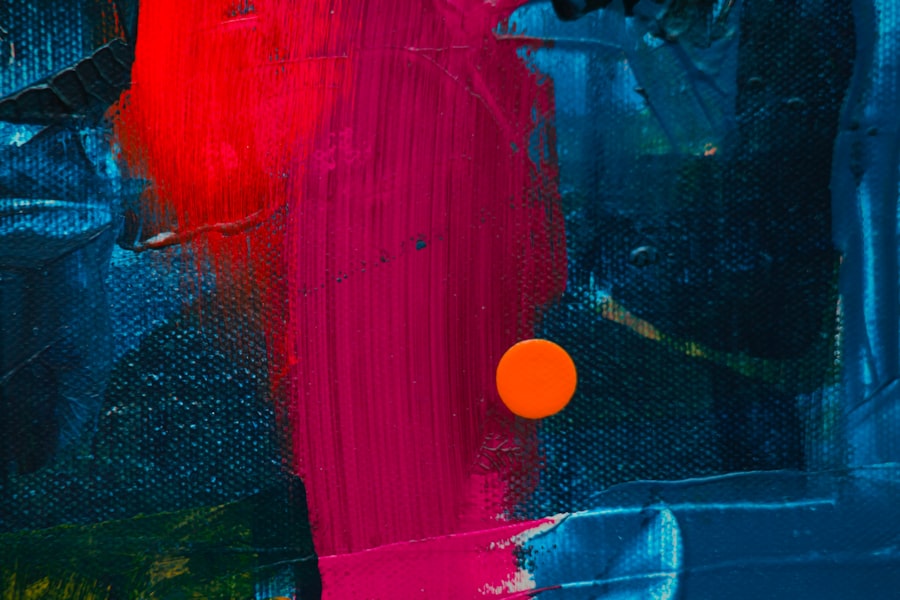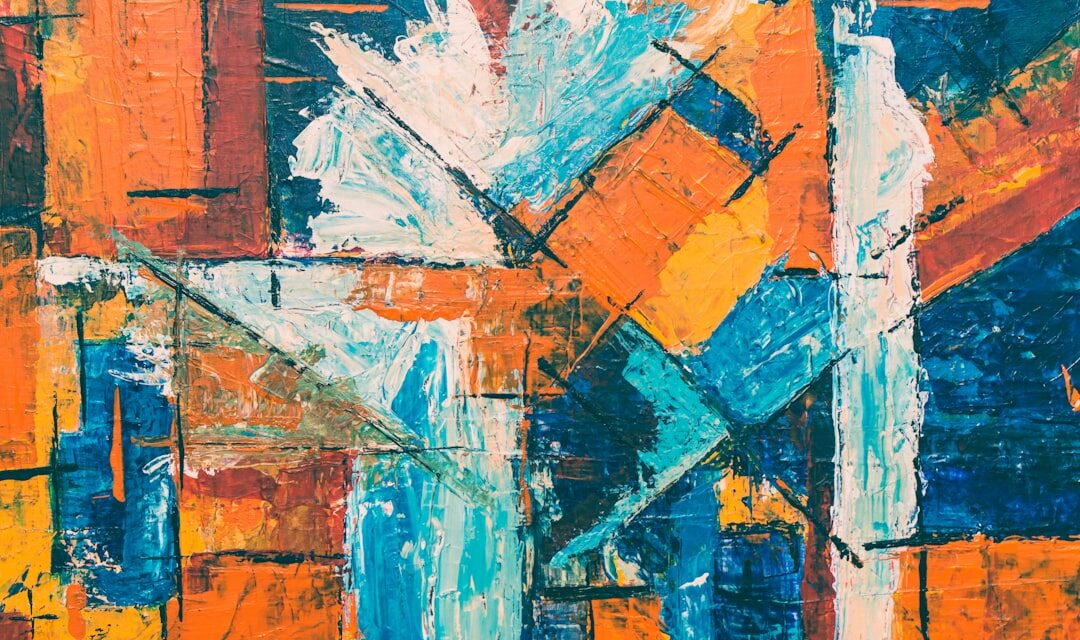The Art Vortex is a compelling phenomenon that has captivated the attention of artists, critics, and art enthusiasts alike. It represents a confluence of creativity, innovation, and cultural dialogue that transcends traditional boundaries within the art world. This concept encapsulates the dynamic interplay between various artistic movements, styles, and mediums, creating a swirling mass of ideas and expressions that challenge the status quo.
As we delve into the intricacies of The Art Vortex, we uncover not only its historical roots but also its profound impact on contemporary artistic practices and societal perceptions of art. At its core, The Art Vortex serves as a metaphor for the ever-evolving nature of artistic expression. It embodies the notion that art is not a static entity but rather a fluid and transformative force that reflects the complexities of human experience.
This article aims to explore the multifaceted dimensions of The Art Vortex, tracing its origins, examining its influence on artists and artworks, and contemplating its future trajectory within the broader cultural landscape.
The History and Origins of The Art Vortex
The origins of The Art Vortex can be traced back to the early 20th century when artists began to challenge conventional artistic norms and embrace new forms of expression. Movements such as Cubism, Futurism, and Dadaism emerged as reactions to the rapidly changing world, marked by technological advancements and social upheaval. These movements laid the groundwork for a more interconnected approach to art, where ideas could flow freely between different styles and disciplines.
The Art Vortex thus finds its roots in this spirit of experimentation and rebellion against established artistic conventions. As the decades progressed, The Art Vortex continued to evolve, absorbing influences from various cultural and social movements. The post-war period saw the rise of Abstract Expressionism, which emphasised individual expression and spontaneity.
Artists like Jackson Pollock and Mark Rothko pushed the boundaries of traditional painting techniques, inviting viewers to engage with their work on a visceral level. This era marked a significant shift in the art world, as artists began to see themselves not merely as creators but as participants in a larger dialogue about existence, identity, and society. The Art Vortex became a space where these conversations could unfold, fostering a sense of community among artists who sought to redefine their roles within the cultural landscape.
The Impact of The Art Vortex on the Art World

The impact of The Art Vortex on the art world has been profound and far-reaching. It has catalysed a shift in how art is perceived, produced, and consumed. One of the most significant changes has been the blurring of boundaries between different artistic disciplines.
No longer confined to traditional mediums such as painting or sculpture, artists have embraced a diverse array of materials and techniques, leading to the emergence of mixed media and installation art. This expansion has allowed for greater experimentation and innovation, resulting in artworks that challenge viewers’ expectations and provoke thought. Moreover, The Art Vortex has fostered a spirit of collaboration among artists from various backgrounds and disciplines.
Interdisciplinary projects have become increasingly common, as artists seek to engage with one another’s ideas and practices. This collaborative ethos has not only enriched individual artistic practices but has also contributed to a more vibrant and dynamic art scene. As artists draw inspiration from one another, they create a tapestry of interconnected ideas that reflect the complexities of contemporary life.
The Art Vortex thus serves as a catalyst for creative synergy, encouraging artists to push their boundaries and explore new avenues of expression.
The Artists and Artworks of The Art Vortex
Within The Art Vortex, numerous artists have emerged as key figures whose works exemplify its principles. These artists often defy categorisation, drawing from various influences to create unique expressions that resonate with audiences on multiple levels. For instance, the works of Ai Weiwei exemplify how art can serve as a powerful vehicle for social commentary.
His installations often address pressing political issues while simultaneously engaging with traditional Chinese art forms, creating a dialogue that bridges cultures and histories. Similarly, the work of Yayoi Kusama embodies the essence of The Art Vortex through her immersive installations that invite viewers into her world of polka dots and infinity rooms. Kusama’s art transcends mere visual appeal; it engages with themes of mental health, identity, and the human experience.
By inviting audiences to participate in her installations, she creates an interactive environment that blurs the line between artist and viewer, reinforcing the idea that art is a shared experience within The Art Vortex.
The Influence of The Art Vortex on Contemporary Art
The influence of The Art Vortex on contemporary art cannot be overstated. It has reshaped artistic practices and challenged traditional notions of authorship and originality. In an age where digital technology plays an increasingly prominent role in artistic production, artists are utilising new tools to create works that reflect the complexities of modern life.
From digital installations to virtual reality experiences, The Art Vortex has opened up new avenues for exploration and expression. Furthermore, The Art Vortex has encouraged artists to engage with social issues in meaningful ways. Many contemporary artists are using their platforms to address topics such as climate change, inequality, and identity politics.
This engagement reflects a broader societal shift towards activism and awareness within the art community. By harnessing the power of their art to provoke dialogue and inspire change, these artists are contributing to a cultural landscape that values social responsibility alongside aesthetic innovation.
The Future of The Art Vortex

As we look towards the future of The Art Vortex, it is clear that its evolution will continue to be shaped by technological advancements and shifting cultural paradigms. The rise of artificial intelligence in creative processes raises intriguing questions about authorship and creativity itself. Artists are beginning to experiment with AI-generated works, challenging traditional notions of what it means to be an artist in an increasingly automated world.
Moreover, as globalisation continues to connect diverse cultures and perspectives, The Art Vortex will likely become an even more inclusive space for artistic expression. Artists from underrepresented communities are gaining visibility and recognition, enriching the dialogue within the art world. This diversification will not only enhance the vibrancy of contemporary art but will also ensure that a multitude of voices are heard in shaping its future trajectory.
The Cultural and Social Significance of The Art Vortex
The cultural and social significance of The Art Vortex extends beyond the realm of aesthetics; it serves as a reflection of our collective consciousness. In an era marked by rapid change and uncertainty, art has become a vital means through which individuals can process their experiences and emotions. The Art Vortex provides a platform for artists to explore complex themes such as identity, belonging, and resilience, resonating deeply with audiences who seek connection in an increasingly fragmented world.
Furthermore, The Art Vortex fosters dialogue around pressing social issues by encouraging artists to engage with their communities. Public art projects, community-based initiatives, and participatory practices have emerged as powerful tools for social change. By involving audiences in the creative process, artists are not only challenging traditional hierarchies but also empowering individuals to take ownership of their narratives.
In this way, The Art Vortex becomes a catalyst for social transformation, highlighting the potential for art to inspire action and foster understanding.
The Legacy of The Art Vortex
In conclusion, The Art Vortex stands as a testament to the enduring power of creativity and innovation within the art world. Its rich history reflects a continuous evolution driven by experimentation and collaboration among artists across diverse disciplines. As we navigate an increasingly complex cultural landscape, The Art Vortex remains a vital space for dialogue and exploration.
The legacy of The Art Vortex lies not only in its impact on individual artists but also in its ability to inspire future generations to push boundaries and challenge conventions. As we look ahead, it is essential to recognise the importance of nurturing this creative ecosystem that fosters inclusivity, diversity, and social engagement. Ultimately, The Art Vortex serves as a reminder that art is not merely an object or an experience; it is a living entity that reflects our shared humanity and shapes our collective future.
If you are interested in exploring more about art, you may want to read an introduction to the Rijksmuseum in Amsterdam, Netherlands. This article provides a fascinating insight into one of the most renowned art museums in the world. You can find out more about the history and collection of this cultural institution by visiting this link.

